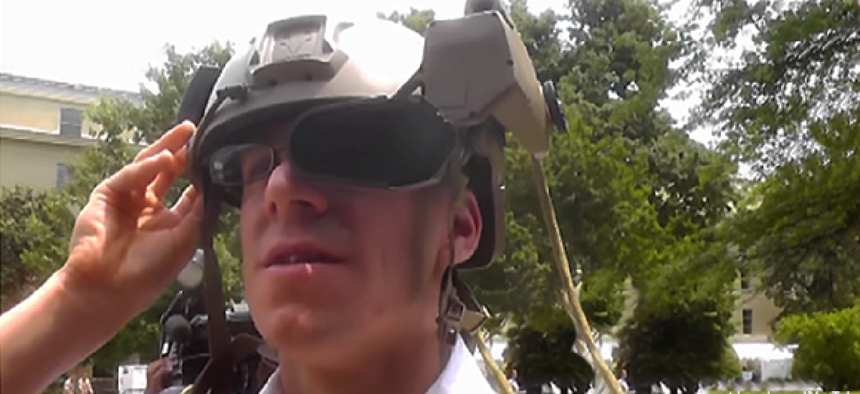DARPA shows 100+ projects at Demo Day


Connecting state and local government leaders
The all-day event showcased the wide array of DARPA projects addressing national security challenges posed by the information revolution and the availability of sophisticated information technologies.
Last week, the Defense Advanced Research Projects Agency held an all-day event at the Pentagon showcasing more than 100 of its latest projects for DOD officials, defense contractors and invited public-sector innovators.
Held in the Pentagon center courtyard, it was the largest single event to take place at the Pentagon. It was not open to the public or industry members other than the project developers.
DARPA Demo Day 2014 was also the first event hosted by the agency’s Information Innovation Office (I2O), which explores ways to protect the nation in the fields of information science and software – areas such as thwarting cyberattacks and improving network security.
“I2O’s mission is to ensure the safety and reliability of essential information technologies against the challenges we face today and also against those we can imagine well into the future. We help make the tools of the information revolution more powerful and useful, not just for those who ensure our security but also for the people and nation they protect,” said I2O Director Dan Kaufman in a statement on the event.
The all-day event showcased the wide array of DARPA projects designed to change how the nation addresses national security challenges posed by the information revolution and by the increasing availability of sophisticated information technologies, the agency said.
The programs were grouped into four main categories:
- Cyber, which included approaches to maintaining the safety and security of IT systems.
- Big Data, or tools to facilitate the use of information at scale.
- Language, including translation technologies to help warfighters communicate more effectively in foreign-language environments.
- Warfighter apps, which included other initiatives of interest to DOD, such as the Revolutionizing Prosthetics program in DARPA’s new Biological Technologies Office.
One of the programs on display was the Cyber Grand Challenge. CGC is a competition to create automatic network defensive systems that find flaws, formulate patches and instantly deploy them, improving the speed, scale and effectiveness of combatting cyberattacks. The final CGC event is slated for early to mid-2016.
A second showcased project was Plan X, a cyberwarfare program “to plan for, conduct, and assess cyberwarfare in a manner similar to kinetic warfare,” according to the Plan X website. The latest part of Plan X, showcased at Demo Day, involved Oculus Rift, a virtual reality headset originally designed for 3D gaming. DARPA is using Oculus Rift to create three-dimensional network simulations for visualizing attacks.
To address big data challenges, DARPA also discussed its Mining and Understanding Software Enclaves program. MUSE seeks to make significant advances in the way software is built, debugged, verified, maintained and understood by integrating ideas from big data analytics, data mining and program analysis.
DARPA’s XDATA program is developing computational techniques and software tools for processing and
analyzing large, imperfect and incomplete data to provide practical and actionable information for use on planning tables and under battle conditions. For Demo Day, program managers demonstrated XDATA’s scalable analytics and Web-based human-computer interaction tools that can be rapidly customized to different missions.
Other programs included:
- High-Assurance Cyber Military Systems program is a semi-automated software code builder that also checks created code to ensure it is secure and works as intended.
- Big Mechanism is an automation technology to help explain the causes and effects that drive complicated systems. Its initial focus is on research relating to cancer pathways.
- Memex aims to improve online searches, with mechanisms for improved content discovery, information extraction, information retrieval, user collaboration and other key search functions. Its first focus is fighting human trafficking.
A full list of DARPA Demo Day 2014 programs with summaries is available on the DARPA website.
The I2O’s Demo Day may start a trend, with other DARPA offices -- including the biotechnology division, electronics division, and weapons and space division -- hosting their own Demo Day, according to the Verge.
Those offices will face financial issues should they create a Demo Day of their own. DARPA is facing budgetary squeezes, which are affecting its programs. The fiscal 2015 science and technology budget request is down about 5 percent, to $11.5 billion compared to fiscal 2014’s $12 billion request, according to lan Shaffer, acting assistant secretary of defense for research and engineering.




